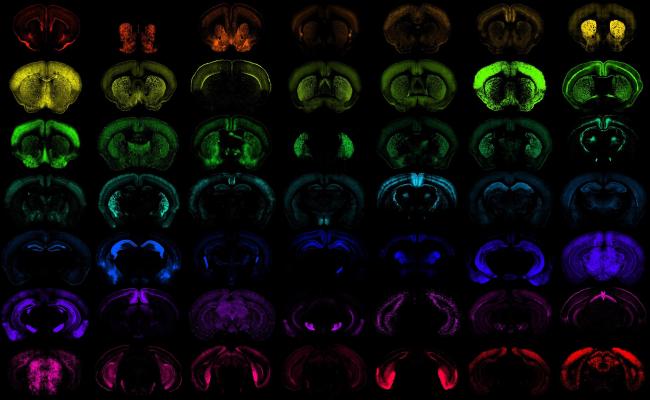Scientists design gene delivery systems for cells in the brain and spinal cord
Wednesday, May 21, 2025
Scientists design gene delivery systems for cells in the brain and spinal cord
NIH-funded breakthrough could enable targeted therapies for many neurological disorders.

Research teams funded by the National Institutes of Health (NIH) have created a versatile set of gene delivery systems that can reach different neural cell types in the human brain and spinal cord with exceptional accuracy. These delivery systems are a significant step toward future precise gene therapy to the brain that could safely control errant brain activity with high precision. In contrast, current therapies for brain disorders mostly treat only symptoms.
The new delivery systems carry genetic material into the brain and spinal cord for targeted use by specific cell types. This platform has the potential to transform how scientists can study neural circuits. It provides researchers with gene delivery systems for various species used in research, without the need for genetically modified, or transgenic, animals. Examples include illuminating fine structures of brain cells with fluorescent proteins and activating or silencing circuits that control behavior and cognition.
“Imagine this new platform as a delivery truck dropping off specialized genetic packages in specific cell neighborhoods in the brain and spinal cord,” said John Ngai, Director of the NIH’s Brain Research Through Advancing Innovative Neurotechnologies® Initiative, or The BRAIN Initiative®. “With these delivery systems, we can now access and manipulate specific cells in the brain and spinal cord – access that was not possible before at this scale.”
The new delivery tools, which use a small, stripped-down adeno-associated virus (AAV) to deliver DNA to target cells, can be broadly applied across many species and experimental systems, including small tissue samples removed during human brain surgeries. The delivery systems have been tested, or validated, in intact living systems, which is an important step for introducing new tools for widespread use. The newly published toolkit includes:
- Dozens of delivery systems that selectively target key brain cell types, including excitatory neurons, inhibitory interneurons, striatal and cortical subtypes, brain blood vessel cells, and hard-to-reach neurons in the spinal cord that control body movement and are damaged in several neurological diseases, such as amyotrophic lateral sclerosis (ALS) and spinal muscular atrophy
- Computer programs powered by artificial intelligence (AI) that can identify genetic “light switches,” known as enhancers, that turn genes on in specific brain cell types, using data from many different species – cutting considerable time and effort for scientists looking for these genetic switches.
Overall, this collection of research tools will significantly accelerate understanding of the human brain. Importantly, the toolkit enables access to specific brain cell types in the prefrontal cortex, an area that’s critical for decision-making and uniquely human traits. With other tools in the collection, scientists can better study individual cells and communication pathways known to be affected in several neurological diseases. These include seizure disorders, ALS, Parkinson’s disease, Alzheimer’s disease, and Huntington’s disease – as well as various neuropsychiatric conditions.
AAV-based treatments are already approved for some conditions, such as spinal muscular atrophy for which a 2016 approval of a gene therapy known as Zolgensma transformed the lives of infants and young children who once faced severe disability or early death. The new collection of gene delivery resources lays the groundwork for more precise treatments that target only affected cells in the brain, spinal cord, or brain blood vessels.
The toolkit is available at distribution centers including Addgene(link is external), a global supplier of genetic research tools. This collection of publications offers researchers standard operating procedures and user guides for these tools.
The work is supported by the NIH’s Brain Research Through Advancing Innovative Neurotechnologies® Initiative, or The BRAIN Initiative®. Funding issued less than four years ago launched a large-scale, team-run project to design new molecular tools that can be useful to many research laboratories. The Armamentarium for Precision Brain Cell Access aims to develop precise and reproducible access to cells and circuits in experimental research models of the brain and spinal cord. The large-scale project brings together experts in the field of molecular biology, neuroscience, and artificial intelligence (AI). The eight papers appear in the May 21 issue of the journals Neuron, Cell, Cell Reports, Cell Genomics, and Cell Reports Methods.
Grants: UF1MH130701, UH3MH120096, U24MH133236, UF1MH128339, UM1MH130981, R01MH123620, U19MH114830, P510D010425, U420D011123, S10MH126994, UH3MH120094, UF1MH130881, F30DA053020, R01FD007478, U01AG076791, R35GM127102, RF1MH114126, UH3MH120095, RF1MH121274, R01MH113005, UH3MH120095
The Brain Research Through Advancing Innovative Neurotechnologies® Initiative and The BRAIN Initiative® are registered trademarks of the U.S. Department of Health and Human Services.
The NIH BRAIN Initiative, a multidisciplinary collaboration across 10 NIH Institutes and Centers, is uniquely positioned for cross-cutting discoveries in neuroscience to revolutionize our understanding of the human brain. By accelerating the development and application of innovative neurotechnologies, The BRAIN Initiative® is enabling researchers to understand the brain at unprecedented levels of detail in both health and disease, improving how we treat, prevent, and cure brain disorders. The BRAIN Initiative involves a multidisciplinary network of federal and non-federal partners whose missions and current research portfolios complement the goals of The BRAIN Initiative.
About the National Institutes of Health (NIH): NIH, the nation's medical research agency, includes 27 Institutes and Centers and is a component of the U.S. Department of Health and Human Services. NIH is the primary federal agency conducting and supporting basic, clinical, and translational medical research, and is investigating the causes, treatments, and cures for both common and rare diseases. For more information about NIH and its programs, visit www.nih.gov.
NIH…Turning Discovery Into Health®
Reference
https://www.cell.com/consortium/brain-armamentarium
Institute/Center
Contact
NIH Office of Communications and Public Liaison
Primary tabs View published(active tab) New draft Moderate Revision state: Published Most recent revision: Yes Actions: Unpublish this revision Wednesday, May 21, 2025 Scientists design gene delivery systems for cells in the brain and spinal cord NIH-fu


